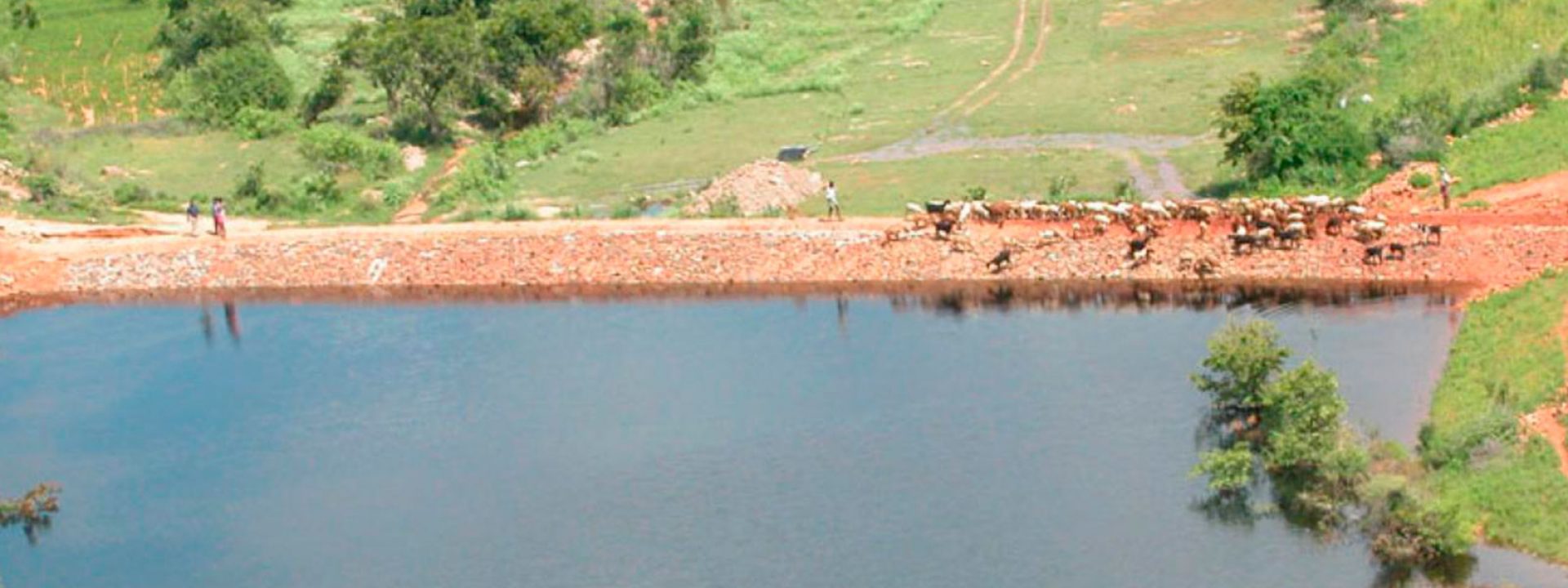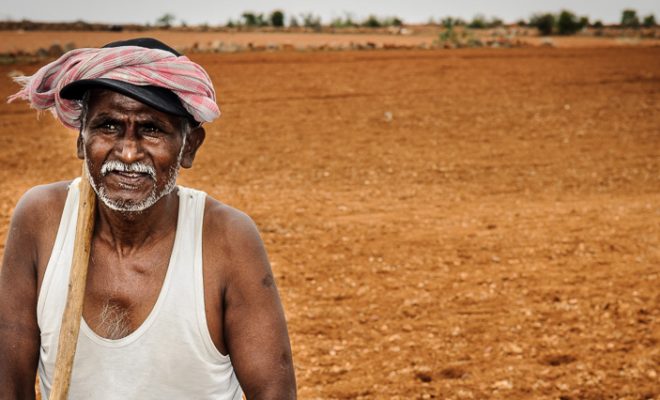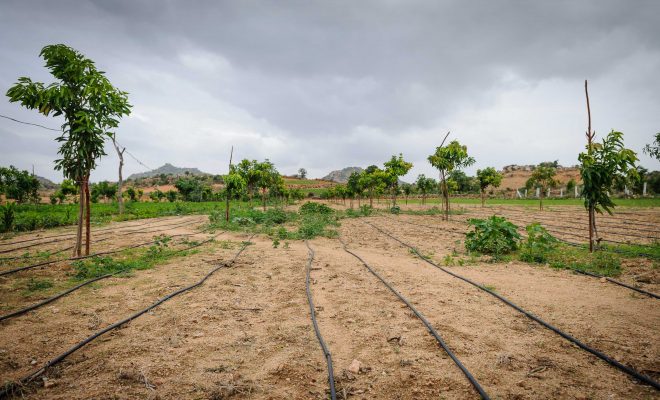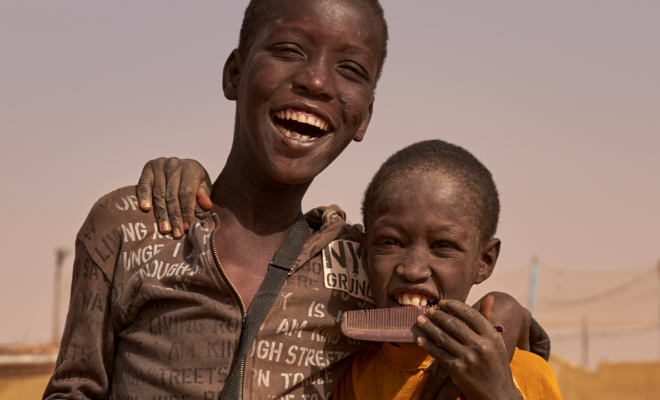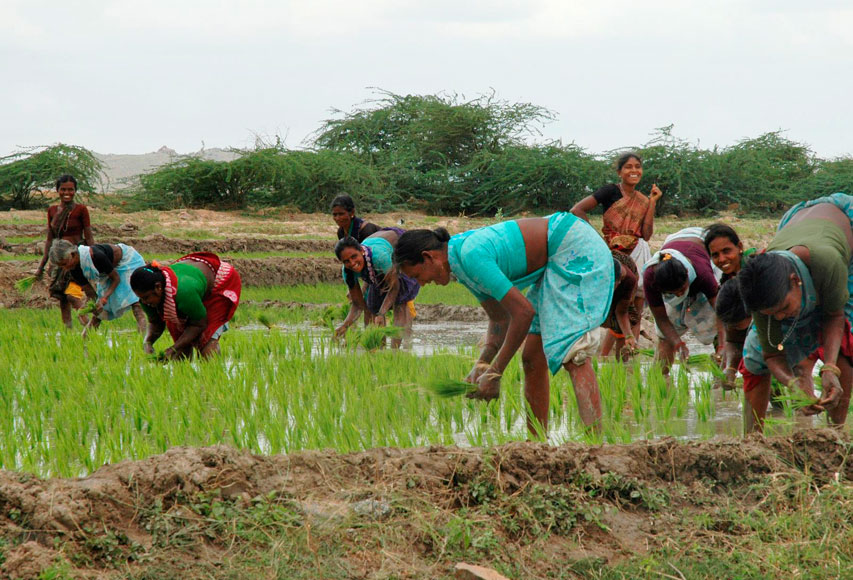
“I owned 2 hectares of dry land and another 2 of wet land. The wet land is located under the reservoir. I drilled two holes in the land. The first hole was drilled in the year 2000 and reached down to 76 metres.
400 guava plants, 50 coconut palms and 2 acid lime plants are growing thanks to the drilling, but the insufficient rainfall of the last few years left the wells with very little water. At one point I feared for my life and lost my confidence. But there were good rains in September and October 2017. The reservoir filled with rainwater in 15 days. My two wells refilled and I gained my confidence. My wife and I are fully committed to our work in our land. The fruit plants are currently blooming, this structure has provided us a permanent solution. My most sincere thanks from the bottom of my heart to all donors.” This is how Sainatha Reddy, a 55 year old farmer from the Mudigubba area, explained how the reservoir built by the project of the We Are Water Foundation and the RDT in Gunjepalli, has allowed him and his wife, Anithamma, to make progress as a family. Both studied up to the tenth grade and have a daughter and a son who are currently studying. They live in a house he inherited from his parents. Without the reservoir they might have had to sell it at a loss and they might have had to migrate to a shantytown in one of the large cities in the country.
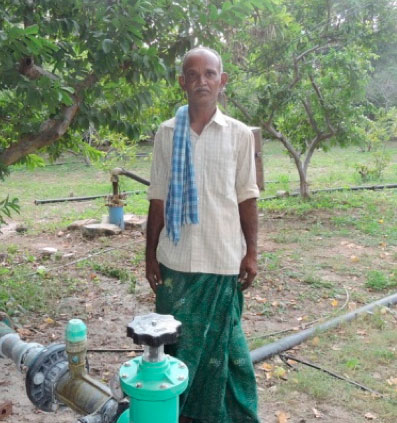
Narayanaswamy, aged 35, owns 0.81 hectares of dry land in the slopes of his village. He lives with his family of 5 in his house. In his opinion, it is very difficult to support his family with so little land and for this reason he acquired 90 heads of livestock. The Girigetla reservoir has filled with water during the month of September 2017. The cattle of the village can drink directly from the reservoir. There are currently nearly 2,000 sheep, 1,000 goats, 60 buffalos and 55 cows. “The farmers are very motivated preparing their crops, the reservoir has made a great change in their lifes,” he declares. Narayanaswamy plans to turn his dry land into wet land by drilling a large well in his land.
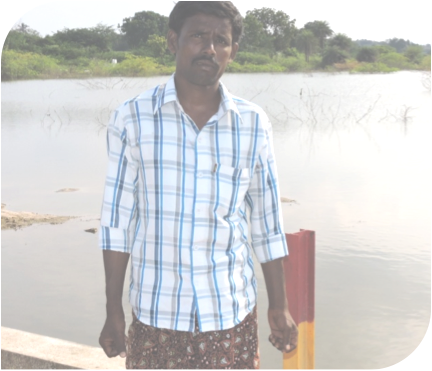
SainathaReddy and Narayanaswamy, as well as many farmers and cattle breeders, suffer the effects of the drought in the Anantapur and Kurnool districts, where the average rainfall is practically half than in the rest of the Andhra Pradesh state. Its proximity to the equator and the high temperatures turn this area with a semiarid climate into the second driest of all India, just behind the Rajasthan desert. These are districts where close to 75% of the population depends on agriculture and the drought and the instability of monsoons have a devastating effect on the poorest social sectors.
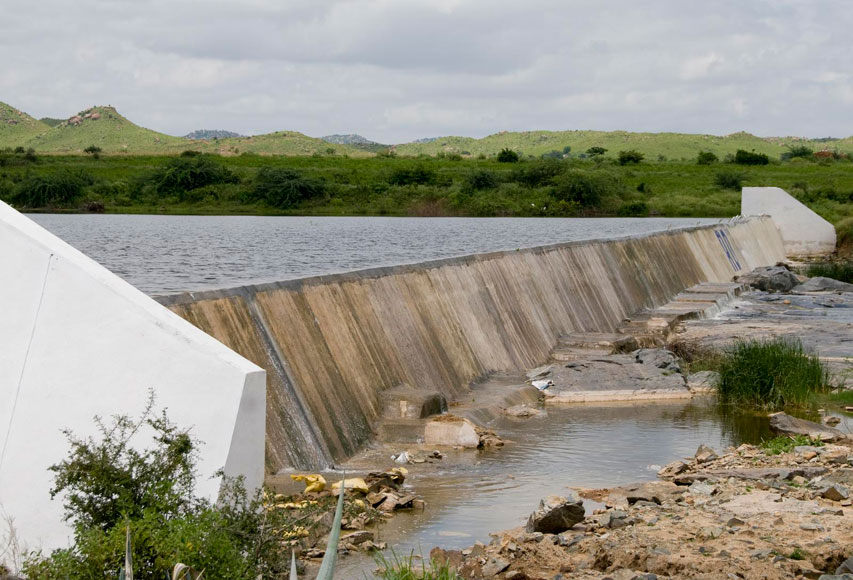
The experiences of the construction of the Ganjikunta reservoir and the water structures for the collection and use of water in Girigetla, projects in which the We Are Water Foundation has collaborated with the RDT, allow the recovery of traditional techniques and infrastructures from precolonial times. Thanks to the construction of these small reservoirs, its inhabitants can guarantee the availability of water sources during the most severe droughts, diversify their crops, water the animals, recover the aquifers by means of filtration and regenerate the forest mass. The infrastructures for the collection and storage of rain water link the poorest ones to their land and their culture and they are a key element of their resilience and adaptation to climate change.


